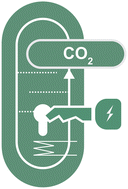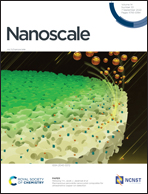Advancing integrated CO2 electrochemical conversion with amine-based CO2 capture: a review
Abstract
Carbon dioxide (CO2) electrolysis is a promising route to utilise captured CO2 as a building block to produce valuable feedstocks and fuels such as carbon monoxide and ethylene. Very recently, CO2 electrolysis has been proposed as an alternative process to replace the amine recovery unit of the commercially available amine-based CO2 capture process. This process would replace the most energy-intensive unit operation in amine scrubbing while providing a route for CO2 conversion. The key enabler for such process integration is to develop an efficient integrated electrolyser that can convert CO2 and recover the amine simultaneously. Herein, this review provides an overview of the fundamentals and recent progress in advancing integrated CO2 conversion in amine-based capture media. This review first discusses the mechanisms for both CO2 absorption in the capture medium and electrochemical conversion of the absorbed CO2. We then summarise recent advances in improving the efficiency of integrated electrolysis via innovating electrodes, tailoring the local reaction environment, optimising operation conditions (e.g., temperatures and pressures), and modifying cell configurations. This review is concluded with future research directions for understanding and developing integrated CO2 electrolysers.

- This article is part of the themed collections: CO2 capture and conversion, Nanoscale Most Popular 2022 Articles and Recent Review Articles


 Please wait while we load your content...
Please wait while we load your content...